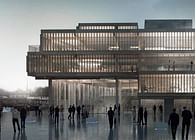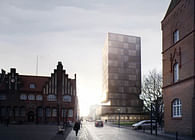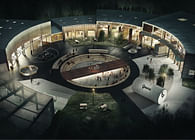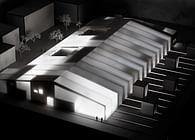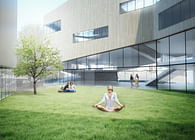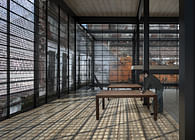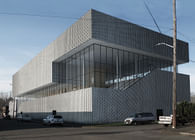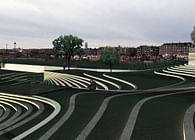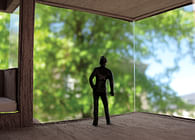
Location: Jagtvej 69, Copenhagen, Denmark
Static Saturation Stage Concert Hall
Jagtvej 69 is probably one of the most controversial sites in Copenhagen. Completed in 1987, the original building was the birthplace of the International Women’s Day, has hosted prominent speakers and musicians such as Lenin, Björk and Nick Cave, served as a gathering for anarchists, and was the reason for some of the worst riots Copenhagen has ever seen when the building was sold to a religious organization and subsequently torn down in 2007. Now referred to as “Ground 69”, the site has remained untouched ever since.
Static Saturation Stage continues in the vein of grand politics, though acknowledging that this is not the same building. The outline of the site is extruded and turned on its side to create the new volume which contains the concert hall, The Black Box, as an elevated, “hovering” entity. As a reference to the post-apocalyptic nature of the site, the concrete facade is equipped with 231 1950’s 16-inch black/white tube television screens displaying static and/or a distorted image feed from the Black Box interior. The cables that connect the TV-screens with the cameras are suspended in mid-air above the lobby. As a result, a kind of meta-transparency is achieved, where the usual perspectives, color, walls and even the room in between are removed from the equation. The fact that someone might be watching from the outside might inspire different behavior from the performers, and thus a different experience for the spectators, in side and outside the Black Box.
Just before the show is about to begin, a 15, 7 and 2 minute warning will clock in playing back a static noise, showing a distorted Doomsday Clock on the tube TV-screens with the arms set to the 15, seven and finally two minutes to midnight respectively.
“The Doomsday Clock conveys how close humanity is to catastrophic destruction--the figurative midnight--and monitors the means humankind could use to obliterate itself. First and foremost, these include nuclear weapons, but they also encompass climate-changing technologies and new developments in the life sciences that could inflict irrevocable harm.”
- The Bulletin of the Atomic Scientists
- Chris Gotfredsen, 2009
Status: School Project
Location: Copenhagen, DK
Additional Credits: Andreas Klok Pedersen: Studio Instructor
Final review panel: Finn Selmer, Claus S. Søndergaard, Andreas Klok Pedersen
